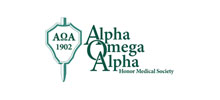Apart from the specific instructions given to you depending on the type of surgery you have undergone, the basic general instructions that you should follow after your surgery are as follows:
- Take pain relieving and other medications as advised. Pain relieving medication should be taken with food. For the first 48-72 hours take your pain medication on a scheduled basis. After the first 48-72 hours of surgery, take the pain medication only when needed.
- Do not drink alcohol, drive a vehicle, operate any machinery or sign a legal document for the first 24 hours after the surgery as the effects of the sedative and/or the anesthesia administered during the surgery may last for the first 24 hours of the surgery.
- Use ice packs to control swelling. However, make sure that the ice bag does not leak into the dressing. Ice packs should be used for the first several weeks after surgery.
- Follow the specific restriction of activity, as advised. Remember that it is easier to prevent developing pain rather than managing it once it has already developed.
- Keep the dressing clean and dry to promote wound healing.
- Begin physical therapy 2-3 days after the surgery. Regular exercises are critical for a successful outcome.
- Eat a healthy diet and drink plenty of water or of non-alcoholic and non-caffeinated drinks.
- Keep your scheduled follow-up appointments with Dr. McNabb and his team.
Please notify Dr. McNabb’s team immediately if you experience any of the following symptoms:
- Increased drainage from the incision
- Increased redness around the operated area
- Increased swelling that does not decrease with ice and elevation
- Fever greater than 101.5°F
- Coldness, numbness or blanched white or bluish colour of the fingers or toes
- Sudden calf pain or shortness of breath
- Chest pain






